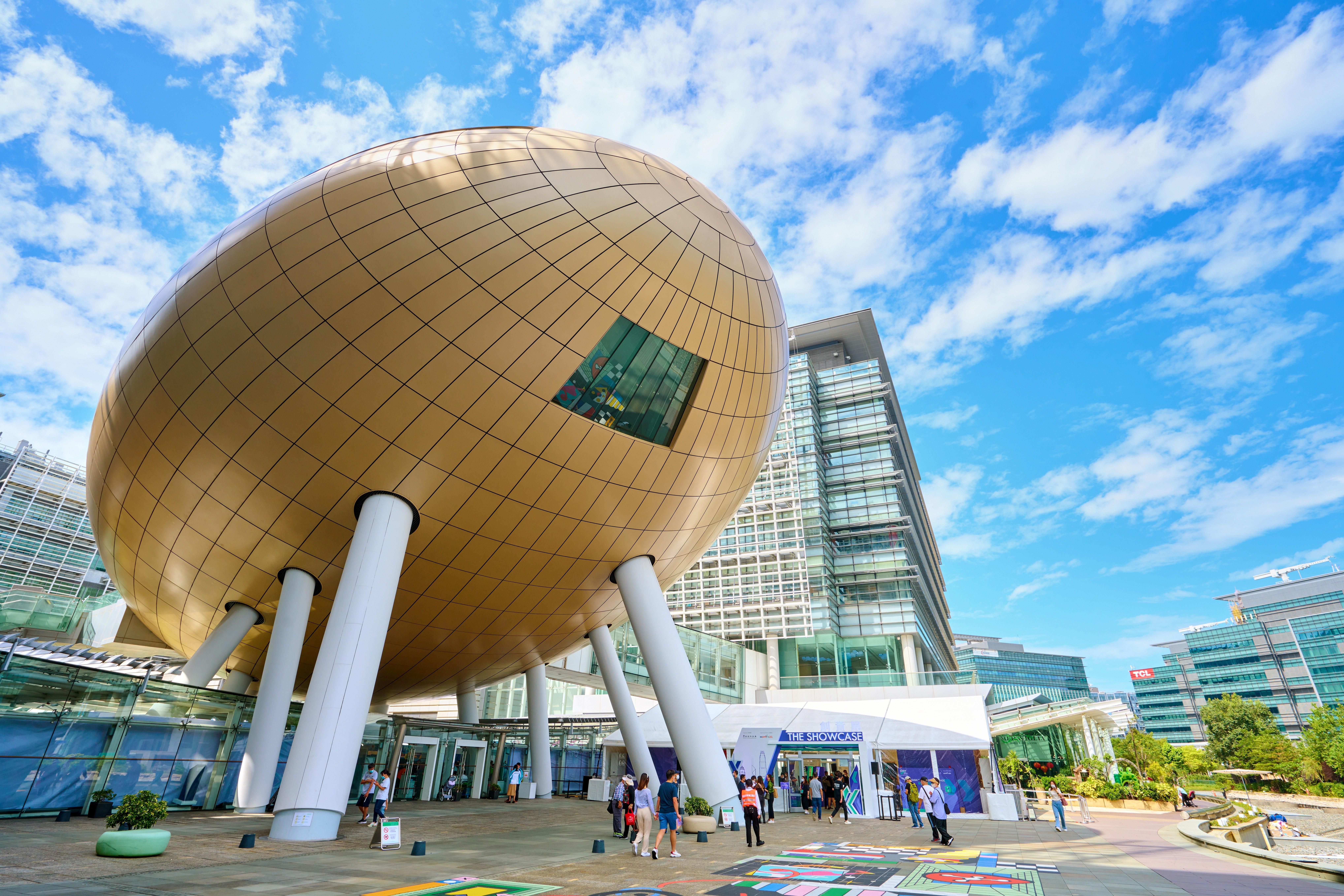 Charles K. Kao Auditorium, commonly known as the Golden Egg, is the principal landmark of the Hong Kong Science Park. The Hong Kong Science and Technology Parks Corporation and Cyberport are the flagship institutions of Hong Kong that promote innovation and technology industries under the support of the Hong Kong Special Administrative Region government. (PHOTO PROVIDED TO CHINA DAILY)
Charles K. Kao Auditorium, commonly known as the Golden Egg, is the principal landmark of the Hong Kong Science Park. The Hong Kong Science and Technology Parks Corporation and Cyberport are the flagship institutions of Hong Kong that promote innovation and technology industries under the support of the Hong Kong Special Administrative Region government. (PHOTO PROVIDED TO CHINA DAILY)
Stakeholders of the innovation and technology industry are confident that the Hong Kong Innovation and Technology Blueprint will provide a comprehensive, forward-looking and strategic roadmap for I&T development in the Hong Kong Special Administrative Region.
Under the blueprint, announced in December 2022, the Hong Kong Special Administrative Region government set out eight major strategies to foster the development of the I&T industry under four broad development directions: enhancing the I&T ecosystem and promoting "new industrialization" in Hong Kong, enlarging the I&T talent pool, promoting the development of the digital economy, and proactively integrating into the overall development of the country.
Sunny Chai Ngai-chiu, chairman of the Hong Kong Science and Technology Parks Corporation, said: "The blueprint charts a clear way forward for Hong Kong's I&T development in the next five to 10 years."
He emphasized Hong Kong's unique advantage of research-innofacturing-finance, or R-I-F, in developing the I&T industry, transforming R&D into economic outcomes.
"Hong Kong is a global gateway for the Chinese mainland. With Hong Kong's unique advantages, we can play the strategic role of attracting in and expanding out, which are very appealing to overseas enterprises to set up offices in Hong Kong," Chai said, adding that Hong Kong should make good use of the R-I-F value chain to hasten technology commercialization.
"The government could step up its efforts to explore more facilitation measures with the mainland authorities to promote the convenient cross-boundary flow of innovation resources, such as capital, personnel, data and materials," Chai said.
The HKSTP has built an I&T base with 12,000 research personnel and more than 1,200 startups, and has facilitated over 260 investment deals that raised over HK$80.2 billion ($10.23 billion) in the past five years.
"The blueprint outlined comprehensive, forward-looking and strategic missions and initiatives for the upcoming critical period for Hong Kong's I&T development, steering Hong Kong at full steam toward the vision of developing into an international I&T center," said Simon Chan Sai-ming, chairman of the Hong Kong Cyberport Management Company.
Currently, the Cyberport community is an I&T ecosystem with over 1,900 startups and technology companies. The Cyberport Macro Fund and co-investments have injected over HK$1.76 billion into 27 projects, with a co-investment ratio of 1:9.
"Cyberport strives to collaborate with the government and society to facilitate Hong Kong's integration into the Guangdong-Hong Kong-Macao Greater Bay Area for synergistic advancement, while playing the role of a gateway linking the mainland and the world, and contributing innovative impetus to the development of our country on a new journey," Chan said. The HKSTP and Cyberport are institutions supported by the Hong Kong government to promote the I&T industry, catalyzing the mainland cooperation platform to hasten I&T industry development.
Inovo Robotics, a manufacturer of robotic arms used in manufacturing, research application and education, as well as a HKSTP incubate company, also welcomed the I&T blueprint.
"The blueprint's strategy to diversify financing channels for the private sector in the forms of venture capital and private equity funding is most welcome," Inovo Robotics Co-founder Jonathan Cheung said.
He added that the Hong Kong government could assist in retaining strategic enterprises and bolstering the existing industries to showcase successful cases of Hong Kong enterprises, as well as bridging the financing needs of the I&T community in Hong Kong by incentivizing the private sector to make investments.
While pursuing the "Innofacturing Tomorrow" strategy by repositioning Hong Kong as an advanced manufacturing hub, the HKSTP's next step is to expand Hong Kong's I&T ecosystem into the Guangdong-Hong Kong-Macao Greater Bay Area, forming a value chain that covers upstream, midstream and downstream processes. HKSTP Shenzhen Branch will open in phases in 2023, with the branch establishing incubation networks in the city-cluster area to facilitate "attracting in and expanding out," and facilitating cross-boundary I&T collaboration.
Cyberport has forged various memorandums of understanding or strategic alliances with the Authority of Qianhai Shenzhen-Hong Kong Modern Service Industry Cooperation Zone of Shenzhen Municipality, Zhuhai Da Heng Qin Company Ltd, Ping An Insurance's One-Connect, Shanghai Lingang Group and GBA Business School, to provide startups with cross-boundary and landing facilitation, information exchange and financial support, laying a foundation for their development in the Greater Bay Area and the mainland. Cyberport also inked a collaboration agreement with the mainland's largest smart retail platform DMall to set up a retail technology experience center at Cyberport, and develop an accelerator program for nurturing retail technology startups. Cyberport's other mainland corporate collaborators include China Resources Enterprise and JS Global, co-creating technology solutions with Cyberport startups to drive digital transformation across sectors.
To facilitate startups to go global and expand into international markets, Cyberport has entered into partnership with I&T counterparts in Dubai in the United Arab Emirates, Japan, Malaysia and Thailand, and arranged for delegations to visit the United Kingdom, the Nordic countries, Japan and others. Over 185 Cyberport startups have expanded to more than 30 overseas markets.


